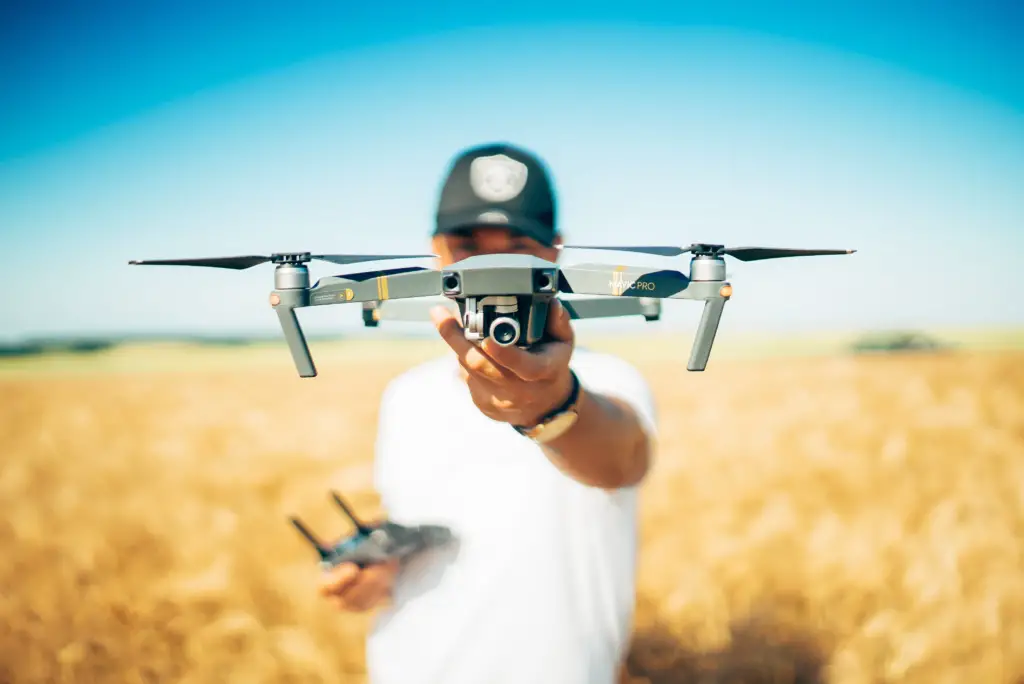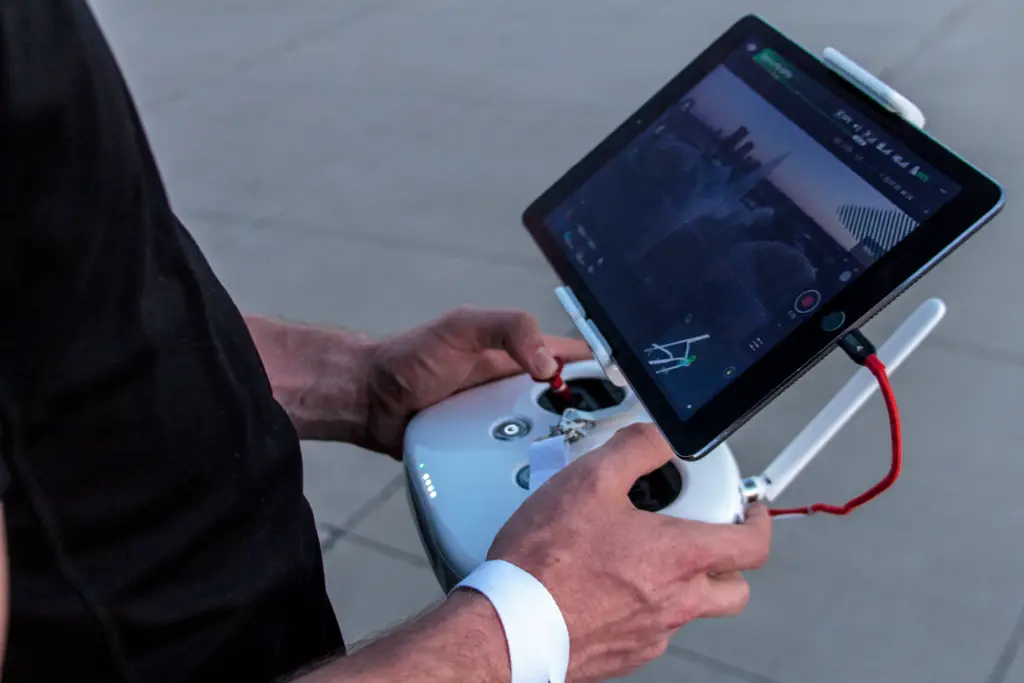Maybe you’ve been studying to receive your drone license, or maybe you’ve already passed the test and think you’re ready to fly. But, there are a few things to keep in mind whether you’re launching your drone for business or for personal use.
It’s easy to think you’re an old pro, especially if you have a user-friendly, compact companion to fly over the countryside and take in stunning views. If you’ve checked out the awesome drones on sites like DrDrone, you already know how many of them can turn anyone into a “pro flyer” right away.
But, how easy a drone is to fly has very little to do with the rules and regulations you need to follow before it heads up into the air. The last thing you want is to invest in a quality drone, get it prepared for takeoff, only to be ‘grounded’ moments later with a fine – or worse!
So, what do you need to do to prepare yourself before launching your drone for the first time – and every time? Let’s go over five things you should keep in mind every time you use your drone. Making sure you’re heeding all of these rules will keep you safe from any trouble and will help to protect your investment.

1. Know Where You Can Fly
In 2019, between commercial drones and those used by hobbyists, there were over 1 million drone registrations in the U.S. alone. And, all of the people operating them have one thing in common; they all have to know where they can and cannot operate their drones.
Once you complete your drone exam, you should have a better idea of restricted areas and some of the best places to fly. If you’re just starting out, it’s a good idea to have a lot of open space with few obstructions in the way, including trees, power lines, etc. It’s required that you maintain a visual line of sight with your drone when you’re flying it, so flying it during the daytime will also help you to stay safe and keep compliant.
Where can’t you/shouldn’t you fly? It may depend on your state or community, but there are some widely-recognized rules that everyone needs to follow. One of the most important no-fly areas to keep in mind is an airport. You should never fly within five miles of an airport without first clearing it with air traffic control.
A good rule of thumb is also to stay away from flying over:
- Schools
- Sports stadiums
- Hospitals
- Emergency situations (fires, hurricanes, ec.)
- National Parks (US)
The Federal Aviation Association has created an app specifically designed for drone pilots, and it can give you a better idea of where you can and can’t fly when you’re on the go.
2. Make Sure Your Drone is Protected
The last thing you want to happen after you get your drone off the ground is to risk an accident you’re not covered for. Even the most seasoned drone flyers aren’t immune to their drones hitting trees, buildings, or even other people.
If your drone causes damage or injures somebody, it’s essential that you have the right kind of insurance on it to cover any repairs or even medical bills. Talk to your insurance company about drone coverage before you fly your device so you won’t be stuck underneath a mountain of debt if an accident were to occur.
Additionally, you’ll want to protect your drone itself! Most people fly drones to take pictures and videos, but if it gets into an accident or crashes into something, all your data can become lost forever if it’s not backed up. It’s a good idea to always carry extra SD cards with you when you’re out shooting with your drone. Never attach anything to the device itself that isn’t recommended, as it can throw off the balance and may even weigh it down.

3. Don’t Fly Indoors
Unless you are an extremely experienced drone pilot, it’s best to avoid indoor flying of any kind. There are several risks that come with flying indoors. First, you need to know the controls of your drone inside and out, because you might need to make adjustments very quickly. If you hesitate for even a moment when flying inside, your drone could crash or cause damage to something else.
You’re also at a greater risk of losing your GPS connectivity when you fly indoors. Some drones have the ability to return to their ‘home base’ when they lose GPS connectivity. But, if your drone doesn’t have that feature or you’ve turned it off, it will fly upward and could hit the ceiling. That could cause potential damage, and may even make the device unusable again.
Losing your GPS will also cause your drone to drift around in the air. Again, if you’re not an experienced pilot, it can start to feel nearly impossible to get control over it again in order to bring it back down. Again, that puts the device at risk for crashing and becoming damaged. When you’re inside, you’re also at a greater risk of crashing into something (or someone) else.
So, while you might be trying to get a cool shot in a place like a big warehouse or gym, it’s best to avoid indoor flying unless you have a lot of previous experience and you’re able to react quickly if things don’t go as planned.
4. Understand Conditions and Your Drone’s Limits
Once you know where you should (and shouldn’t) fly your drone, it’s also important to know when you should/shouldn’t fly it.
It might sound obvious, but you should never fly your device in hazardous weather conditions. This includes things like:
- Snow
- Heavy rain
- Wind
- Extreme fog
Remember, you need to maintain a line of sight with your drone while you’re flying it. That isn’t easy to do in bad weather, but you’re also running the risk of your device getting damaged by the elements.
Take the time to learn what your drone’s max speed limit is, and that will give you a better idea of the winds you can fly against.
For example, if your drone can reach speeds of 25 miles per hour, it won’t be able to face winds that are traveling 30 miles per hour. Simply put, if you try to fly against that kind of wind, your drone will be forced backward and could crash.
5. Make Sure You’re Physically and Mentally Capable to Pilot the Drone
Drone flying is a hobby for many people and a profession for others. No matter how you use your drone, though, here are a few things all pilots need to have in common; the general ability to fly.
Think about getting into a car and going for a drive. You wouldn’t do it under the influence of drugs or alcohol, or if you were extremely tired, angry, unfocused, etc.
Likewise, you shouldn’t fly a drone if you’re not in the right state of mind, either. It’s not just a game or something fun to do. When you’re in control of something that is moving through the air, it takes a lot of focus and responsibility to make sure nothing goes awry. Make sure you’ve got a clear head, you’re confident in your abilities, and you stay safe.
Additionally, if you’re considering becoming a professional drone pilot, or doing it for commercial use, there are a few characteristics that great pilots tend to have. Some of these include:
- The ability to pay attention to detail
- Social confidence
- A calm and collected demeanor (especially in high-stress situations)
- Organizational skills
- Humility
- Discipline
Obviously, those characteristics aren’t necessary to be a drone pilot, but they can help – especially if you’re considering doing it for a living or working for a commercial business that needs regular drone shots. Think about why each one is important, and whether there are any of those areas you need to work on, as a pilot.
Flying a drone is about so much more than the technical side of things. Yes, that’s obviously very important. If you don’t know the rules and how to operate your device, you’re going to run into problems. But, the best drone flyers pick up a “feel” for flying. It’s something that comes with time and practice, like anything else.
Getting Your Drone Off the Ground
A good rule of thumb is to create a checklist for yourself before you launch your drone, especially for the first time. Do you have the drone registered? Check. Are you in a safe fly-zone? Check. A list will ensure that you don’t forget any of the important details necessary to safely take flight. A a result, you’ll protect yourself, your drone, and others who might be nearby.
If all of this sounds like a lot of information to remember – it is! But, with time it will start to feel like second nature. Taking things like this seriously will help to decrease the number of drone accidents across the globe, increase privacy, and keep the popularity of drone-flying as “sky-high” as possible.










